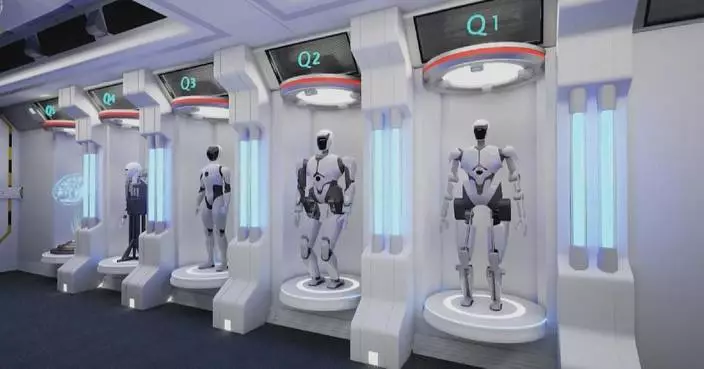A new metro line linking Shanghai's Pudong and Hongqiao airports opened on Friday, bringing the city's total operational mileage of rail transit network to 896 km.
According to Shanghai Metro, with an operational mileage of 59 km, the newly added suburban airport line begins at Hongqiao Airport Terminal 2 in the west and extends to Pudong International Airport Terminal 1 and 2 in the east.
With a designed speed of 160 km per hour, the trains operating on the new line could link the two major airports in 40 minutes.
"Now, I am heading for Pudong Airport. I checked the schedule and it will take 38 minutes to get there, more than an hour earlier than expected. So it's quite surprising," said Wang Yonghang, a passenger.
"It's good. The ride is smooth and fast. Especially for people like us coming back from a business trip out of town, no matter if we take train or plane, getting home from Hongqiao Station is much easier than before," said Ye Feng, another passenger.
The total length of the new line reaches 68.6 km with a total of nine stations, regarded as a critical east-west backbone of the city's regional metro network.
"Currently, trains run every 15 minutes, with full coverage during the morning and evening rush hours. The first train starts at 06:00 and the last one departs at 22:39," said Gao Fei, deputy chief engineer of Shanghai Metro Operation Co., Ltd.
The line will connect with the city's railway stations and extend towards neighboring Jiangsu and Zhejiang provinces, according to the Shanghai Municipal Transportation Commission.
This line is also available for the operation of high-speed trains and will further enhance Shanghai's connectivity to the Yangtze River Delta region, according to the Shanghai Shen-Tie Investment Co., Ltd.
Beijing and Shanghai, two of China's most populous cities, boast urban rail transit networks spanning 879 km and 896 km, respectively, making them among the largest in the country.

New railway linking two airports starts operation in Shanghai
China has intensified efforts to streamline payment options for foreign visitors this year, aimed at enhancing their travel experience and boost inbound tourism, which has seen steady growth in recent years.
From January to November, the number of foreign arrivals in China surged by 86.2 percent year on year, reaching 29.2 million.
This influx of tourists has been accompanied by a significant rise in the use of foreign payment methods.
In the first half of this year alone, transaction volumes of foreigners using overseas wallet apps to pay for goods and services in China increased more than sevenfold, according to data from NetsUnion Clearing Corporation, a Chinese online payment clearing house under the People's Bank of China.
During the same period, the number of foreign wallet transactions in China hit 28.75 million, up 5.29 times from the previous year. Meanwhile, transaction volume reached 5.32 billion yuan (about 729 million U.S. dollars), a 7.67-fold increase from last year's figures.
Overseas bank cards are now widely accepted across China, and Chinese mobile payment giants Alipay and WeChat Pay have integrated Visa and Mastercard, allowing foreign visitors to pay seamlessly like locals. "We managed to link our two credit cards to Alipay, and everything worked fine. We looked on the Internet, there are some blogs that explain how to create your Alipay account and how to link your credit card. We only paid with the QR code, almost did not use cash," said a foreign visitor.
"Our collaboration with Alipay and WeChat, is just the first start. Really what it enabled is our global network, our global consumer base, and our global partner network with all the financial institutions. And also another good example is we just announced in September that the Beijing subway can accept direct Mastercard payment. So, as an inbound traveler to Beijing, for them to take subway, they just need to tap their Mastercard at the gate and they can enter the subway," said Dennis Chang, president of Mastercard Greater China.
In September, Beijing's subway system launched a service allowing passengers to tap their Mastercard or Visa card at the gate, eliminating the need for physical tickets.
Since Sept 13, a total of 490 stations across the city's subway network have adopted this new system, further improving convenience for foreign visitors.

China expands payment options for int'l inbound tourists










